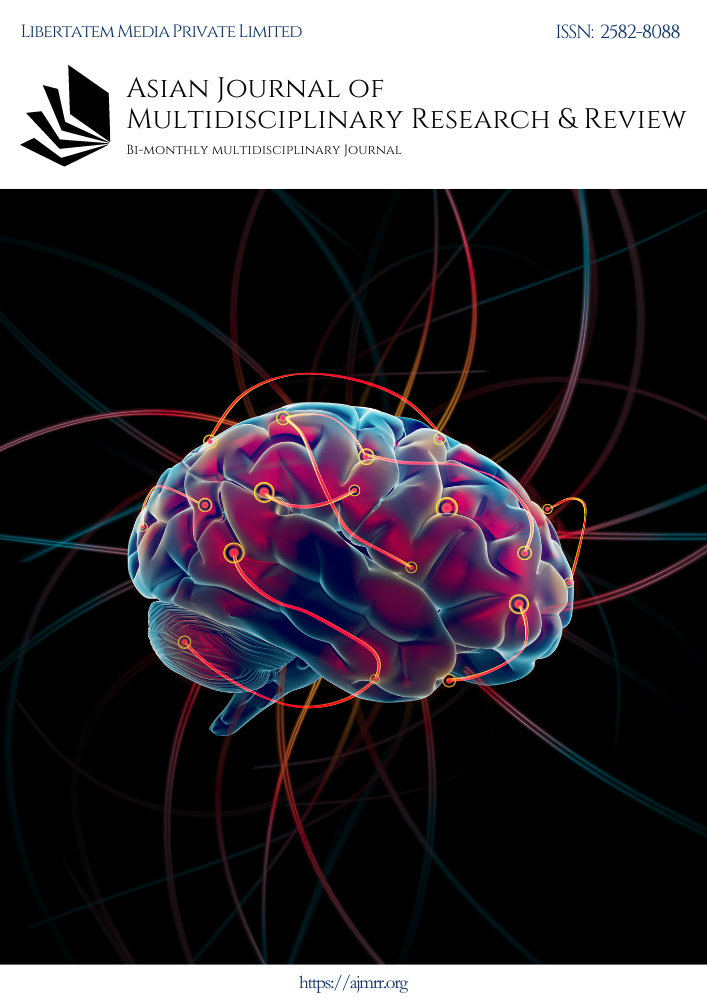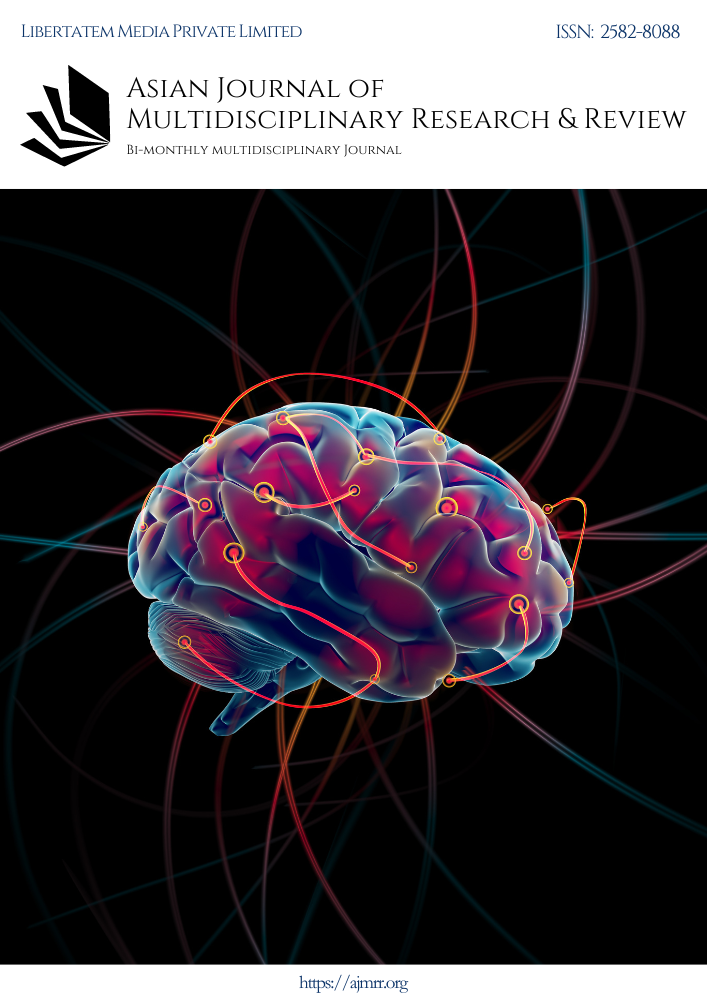Ethical and Legal Implications of Data Sharing in SaaS Laboratory Management Systems
DOI:
https://doi.org/10.55662/AJMRR.2024.5306Keywords:
GDPR, HIPAA, SaaS, Software as a Service, Data Sharing, Legal ImplicationsAbstract
Over the years, the use of Software as a Service (SaaS) in a laboratory information management system has transformed sharing and management in the latter system. Such a transformation, however, brings along complex ethical and legal challenges for which scrutiny is supposed to be considered. Implication for adopting SaaS platforms includes fundamental concern about data privacy, security, and the overall integrity of scientific research.
The paper systematically analyses ethical and legal implications associated with data sharing through SaaS platforms in the management of laboratories. This thus revolves around the understanding of how these systems can handle key aspects such as data ownership, respect for privacy, and compliance with international laws, and the resultant effects these would have on respective stakeholders across the scientific community.
We, in this approach, have reviewed a wide range of literature, including fine details of case studies and views by experts, in light of current practices and challenges within SaaS-based laboratory management. We incorporate all these methods within the research to provide an integral view of the multidimensional ethical and legal landscaping, therefore delivering an approach with both depth and context to the analysis.
It was mainly, regarding informed consent, and a very complex legal challenge emphasized in this study for compliance with GDPR, along with data confidentiality, respectively, for compliance with HIPAA. The study focused on the non-existence or lack of uniformity of regulatory frameworks that can provide for the special characteristics of SaaS data management and cross-border data flows.
Downloads
References
Singh, A., Sharma, S., Kumar, S. R., & Yadav, S. A. (2016, February). Overview of PaaS and SaaS and its application in cloud computing. In 2016 International Conference on Innovation and Challenges in Cyber Security (ICICCS-INBUSH) (pp. 172-176). IEEE.
Berman, F., & Cerf, V. (2013). Who will pay for public access to research data? Science, 341(6146), 616-617.
Palos‐Sánchez, P. R., Arenas‐Márquez, F. J., & Aguayo-Camacho, M. (2017, January 1). Cloud Computing (SaaS) Adoption as a Strategic Technology: Results of an Empirical Study. Journal of Mobile Information Systems. https://doi.org/10.1155/2017/2536040
Adjei, J. K. (2015). Explaining the role of trust in cloud computing services. Info, 17(1), 54-67.
Dhirani, L. L., Mukhtiar, N., Chowdhry, B. S., & Newe, T. (2023). Ethical dilemmas and privacy issues in emerging technologies: a review. Sensors, 23(3), 1151.
Riso, B., Tupasela, A., Vears, D. F., Felzmann, H., Cockbain, J., Loi, M., & Rakic, V. (2017). Ethical sharing of health data in online platforms–which values should be considered? Life sciences, society, and policy, 13, 1-27.
Kaikkonen, T. (2019). SaaS Application Integration Challenges.
Regulation, P. (2016). Regulation (EU) 2016/679 of the European Parliament and making technological advances benefit all parties concerned without compromising ethical and legal standards. of the Council. Regulation (EU), 679, 2016.
Act, A. (1996). Health insurance portability and accountability act of 1996. Public law, 104, 191.
Pearson, S., & Benameur, A. (2010, November). Privacy, security, and trust issues arising from cloud computing. In 2010 IEEE Second International Conference on Cloud Computing Technology and Science (pp. 693-702). IEEE.
Bartolini, C., Santos, C., & Ullrich, C. (2018). Property and the cloud. Computer Law & Security Review, 34(2), 358-390.
Savolainen, S. (2023). Evaluating security and privacy of SaaS service.
Sousa, R., Peixoto, H., Abelha, A., & Machado, J. (2023, July). Implementing a Software-as-a-Service Strategy in Healthcare Workflows. In International Symposium on Distributed Computing and Artificial Intelligence (pp. 347-356). Cham: Springer Nature Switzerland.
Yadegaridehkordi, E., Nilashi, M., Shuib, L., & Samad, S. (2020). A behavioral intention model for SaaS-based collaboration services in higher education. Education and information technologies, 25, 791-816.
Farquhar, J., Michels, N., & Robson, J. (2020). Triangulation in industrial qualitative case study research: Widening the scope. Industrial Marketing Management, 87, 160-170.
Abdulsalam, Y. S., & Hedabou, M. (2021). Security and privacy in cloud computing: technical review. Future Internet, 14(1), 11.
Liu, H., Wang, Y., Fan, W., Liu, X., Li, Y., Jain, S., & Tang, J. (2022). Trustworthy ai: A computational perspective. ACM Transactions on Intelligent Systems and Technology, 14(1), 1-59.
Reichenberger, J., Radix, A. K., Blechert, J., & Legenbauer, T. (2022). Further support for the validity of the social appearance anxiety scale (SAAS) in a variety of German-speaking samples. Eating and Weight Disorders-Studies on Anorexia, Bulimia, and Obesity, 27(3), 929-943.
Muller, S. H., van Thiel, G. J., Mostert, M., & van Delden, J. J. (2023). Dynamic consent, communication and return of results in large-scale health data reuse: Survey of public preferences. Digital Health, 9, 20552076231190997.
Goode, S., Lin, C., Tsai, J. C., & Jiang, J. J. (2015). Rethinking the role of security in client satisfaction with Software-as-a-Service (SaaS) providers. Decision Support Systems, 70, 73-85.
Bezuidenhout, L. (2013). Data sharing and dual-use issues. Science and engineering ethics, 19, 83-92.
Slade, S., & Prinsloo, P. (2013). Learning analytics: Ethical issues and dilemmas. American Behavioral Scientist, 57(10), 1510-1529.
Reamer, F. G. (2017). Evolving ethical standards in the digital age. Australian Social Work, 70(2), 148-159.
Bos‐Brouwers, H. E. J. (2010). Corporate sustainability and innovation in SMEs: Evidence of themes and activities in practice. Business strategy and the environment, 19(7), 417-435.
Bartolini, C., Santos, C., & Ullrich, C. (2018). Property and the cloud. Computer Law & Security Review, 34(2), 358-390.
Opara-Martins, J. (2017). A decision framework to mitigate vendor lock-in risks in cloud (SaaS category) migration (Doctoral dissertation, Bournemouth University).
Culot, G., Nassimbeni, G., Podrecca, M., & Sartor, M. (2021). The ISO/IEC 27001 information security management standard: literature review and theory-based research agenda. The TQM Journal, 33(7), 76-105.
Greenleaf, G. (2017). Global data privacy laws 2017: 120 national data privacy laws, including Indonesia and Turkey. Including Indonesia and Turkey (January 30, 2017), 145, 10-13.
Bygrave, L. A. (2014). Data privacy law: an international perspective.
Kushner, C. (2010). Regulation of transborder data flows under data protection and privacy law: past, present, and future. TILT Law & Technology Working Paper, (016)
Downloads
Published
Issue
Section
License
Copyright (c) 2024 Vicrumnaug Vuppalapaty (Author)

This work is licensed under a Creative Commons Attribution-NonCommercial-ShareAlike 4.0 International License.
License Terms
Ownership and Licensing:
Authors of research papers submitted to the Asian Journal of Multidisciplinary Research & Review (AJMRR) retain the copyright of their work while granting the journal certain rights. Authors maintain ownership of the copyright and grant the journal a right of first publication. Simultaneously, authors agree to license their research papers under the Creative Commons Attribution-ShareAlike 4.0 International (CC BY-SA 4.0) License.
License Permissions:
Under the CC BY-SA 4.0 License, others are permitted to share and adapt the work, even for commercial purposes, as long as proper attribution is given to the authors and acknowledgment is made of the initial publication in the Asian Journal of Multidisciplinary Research & Review. This license allows for the broad dissemination and utilization of research papers.
Additional Distribution Arrangements:
Authors are free to enter into separate contractual arrangements for the non-exclusive distribution of the journal's published version of the work (e.g., posting it to institutional repositories or publishing it in books), provided they acknowledge the initial publication of the work in the Asian Journal of Multidisciplinary Research & Review.
Online Posting:
Authors are encouraged to share their work online (e.g., in institutional repositories or on personal websites) both prior to and during the submission process to the journal. This practice can lead to productive exchanges and greater citation of published work.
Responsibility and Liability:
Authors are responsible for ensuring that their research papers do not infringe upon the copyright, privacy, or other rights of any third party. The Asian Journal of Multidisciplinary Research & Review disclaims any liability or responsibility for any copyright infringement or violation of third-party rights in the research papers.







